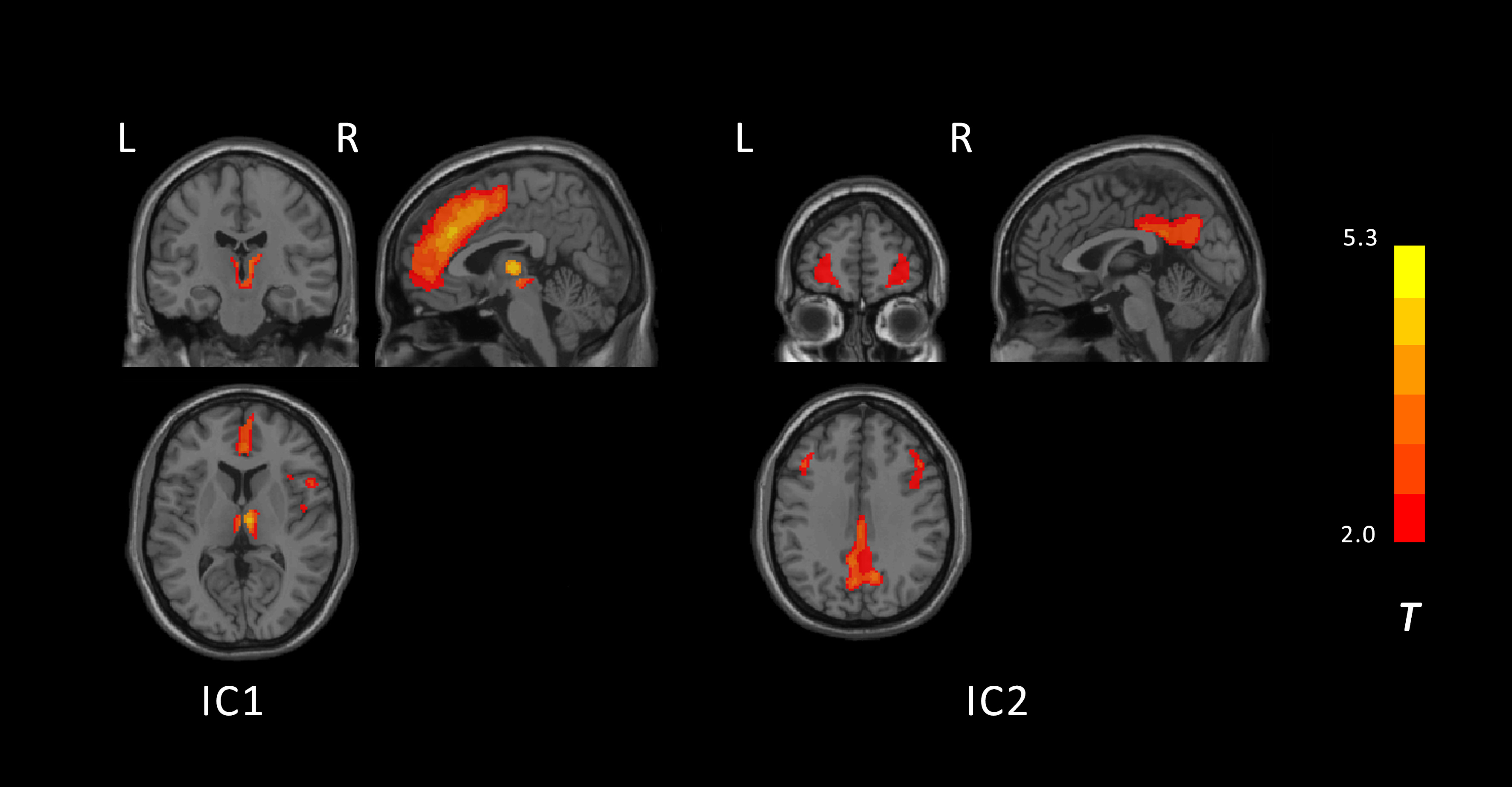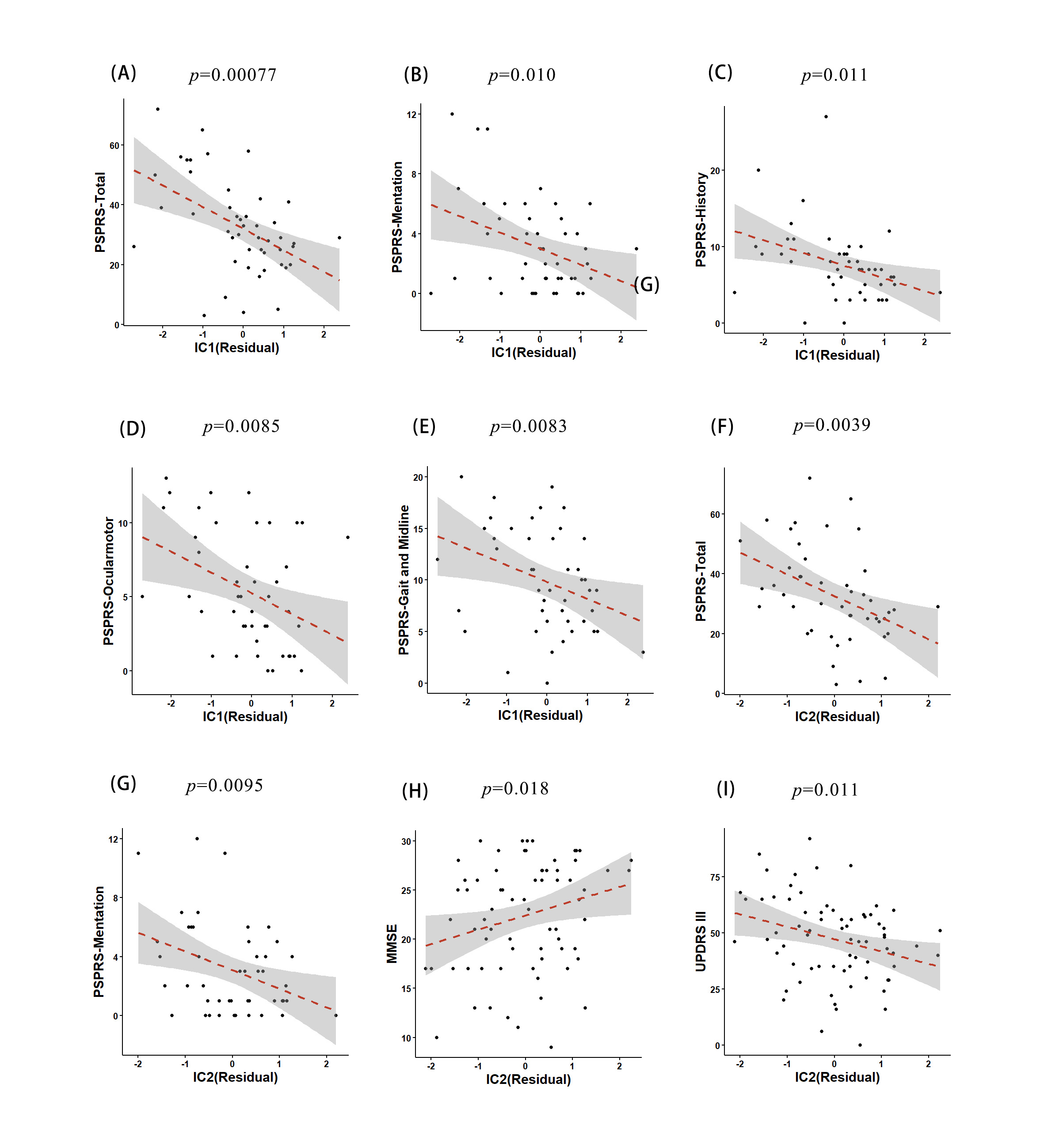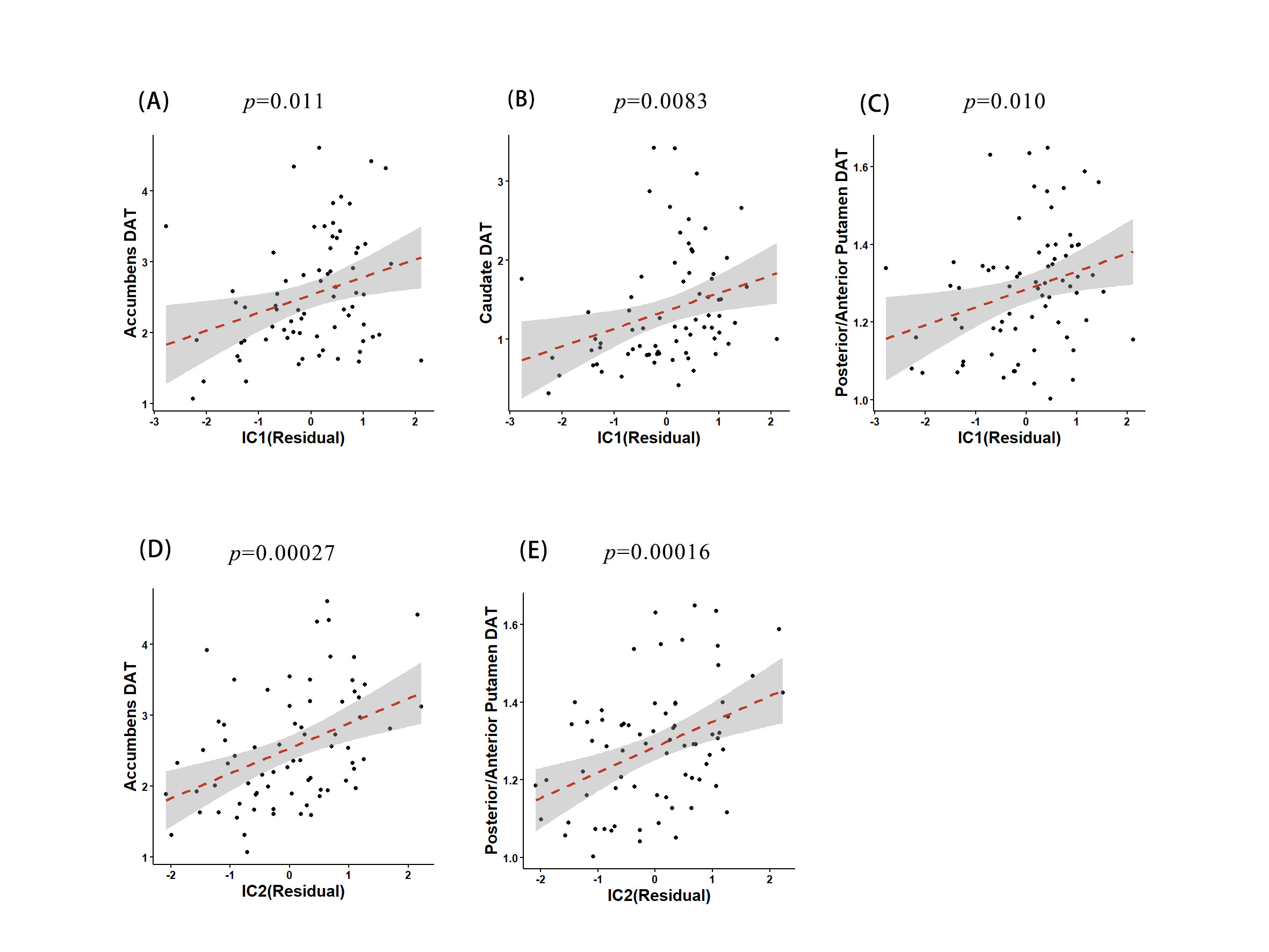Category: Parkinsonism, Atypical: PSP, CBD
Objective: The study aims to apply S-ICA to 18F-fluorodeoxyglucose (FDG) data in progressive supranuclear palsy (PSP) patients, identifing PSP-specific independent metabolic covariate networks. We also investigat their association with clinical and dopaminergic features.
Background: PSP is a neurodegenerative disease characterized by high clinical and pathological heterogeneity, with an under-researched pathophysiological mechanism. Spatial independent component analysis (S-ICA), a multivariate analysis method and an unsupervised data-driven approach, can explore independent metabolic covariate networks related to PSP, potentially providing new insights into its pathophysiological mechanisms.
Method: The study includes collecting FDG and Dopaminergic Transporter (DAT) Positron Emission Tomography (PET) scan data from 72 PSP patients and 70 healthy controls, along with a series of neuropsychiatric assessments for all PSP patients. By employing S-ICA, the study explores independent metabolic covariate networks associated with PSP, analyzing their correlation with clinical variables of PSP. Moreover, the study further examines the relationship between these metabolic covariate networks and dopaminergic uptake in the striatal region.
Results: The S-ICA method detected novel metabolic abnormalities in the posterior cingulate cortex. Two PSP-related independent metabolic covariate networks identified: one PSP-specific network in the lateral frontal lobe-posterior cingulate cortex, and the thalamus-medial frontal lobe network. Both networks negatively correlated with the overall severity of PSP symptoms. The lateral frontal lobe-posterior cingulate cortex network correlated with cognitive function and the parkinsonian severity, while the thalamus-medial frontal lobe network correlated with the severity of gait/axial symptoms and ocular motor abnormalities. In terms of dopaminergic uptake, the lateral frontal lobe-posterior cingulate cortex network mainly related to the nucleus accumbens, whereas the thalamus-medial frontal lobe network related primarily to the caudate nucleus.
Conclusion: These two networks not only reflect the overall severity and specific clinical symptoms of PSP but may also be partly caused by different abnormalities in dopaminergic pathways. The lateral frontal lobe-posterior cingulate cortex network could potentially serve as a diagnostic marker for PSP.
The two covariant brain networks of PSP
Correlation with clinical variables
Correlation with striatal DAT uptake
To cite this abstract in AMA style:
B. Wang, H. Wang, W. Luo. Metabolic Covariance Networks in Progressive Supranuclear Palsy Revealed by Spatial independent component analysis [abstract]. Mov Disord. 2024; 39 (suppl 1). https://www.mdsabstracts.org/abstract/metabolic-covariance-networks-in-progressive-supranuclear-palsy-revealed-by-spatial-independent-component-analysis/. Accessed December 28, 2025.« Back to 2024 International Congress
MDS Abstracts - https://www.mdsabstracts.org/abstract/metabolic-covariance-networks-in-progressive-supranuclear-palsy-revealed-by-spatial-independent-component-analysis/



